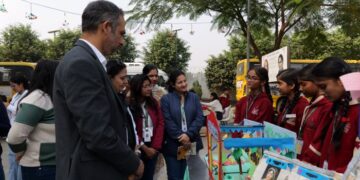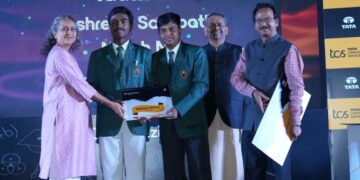By Vedant Hamirwasia, Director ODA Class
The classroom of yesterday, with its dusty chalkboards and rows of silent desks, is rapidly transforming into a dynamic digital playground. As technology reshapes our world at breakneck speed, the education sector is undergoing a revolutionary metamorphosis. This shift isn’t just about swapping textbooks for tablets; it’s about equipping young minds with the tools they need to thrive in an increasingly digital future.
India, home to the world’s largest youth population, stands at the forefront of this educational revolution. With 580 million people aged 5-24, the country is poised to harness the power of technology to create a generation of innovators, problem-solvers, and digital natives. Let’s explore how early-tech education is molding the architects of tomorrow’s world.
The Digital Classroom: A New Frontier
Gone are the days when technology in schools meant a single computer lab visited once a week. Today’s classrooms are becoming fully integrated digital environments. Smart boards have replaced chalkboards, and tablets have become as common as notebooks.
This digital transformation is not just about flashy gadgets; it’s about creating immersive learning experiences that captivate young minds. Extended Reality (XR) technologies, including Augmented Reality (AR) and Virtual Reality (VR), are opening up new dimensions of learning. Imagine history lessons where students can virtually walk through ancient civilizations or science classes where complex molecular structures come to life in 3D. These technologies not only make learning more engaging but also cater to diverse learning styles, ensuring that no student is left behind.
Personalized Learning: AI’s Promise in Education
Artificial Intelligence is revolutionizing the way we approach education. By analyzing individual learning patterns and preferences, AI-powered platforms can create personalized learning paths for each student. This tailored approach ensures that students can learn at their own pace, focusing on areas where they need the most help.
Moreover, the integration of generative AI in online platforms opens up new avenues for instruction in vernacular languages. In a linguistically diverse country like India, this breakthrough has the potential to make quality education accessible to millions of students who might otherwise be left out of the digital learning revolution.
Bridging the Skills Gap: Micro-Credentials and Digital Badges
As the job market is evolving at a quick pace, the need for continuous skill development has never been more critical. The edtech sector is responding to this need with micro-credentials and digital badges. These bite-sized learning modules allow students to acquire specific skills quickly and efficiently.
The 50% rise in course offerings in this area reflects a growing trend towards focused, skills-specific learning. This approach not only prepares students for the jobs of today but also equips them with the adaptability to thrive in the jobs of tomorrow. For young learners, this means developing a growth mindset and a love for lifelong learning from an early age.
Blended Learning: The Best of Both Worlds
While digital tools offer incredible opportunities, the human element in education remains irreplaceable. This is where blended learning models come into play, combining the best of traditional teaching methods with innovative digital approaches. It allows for greater flexibility and personalization. Students can engage with interactive online content at their own pace while still benefiting from face-to-face interactions with teachers and peers. This model is particularly crucial in addressing the digital divide, ensuring that students from all backgrounds can benefit from technological advancements in education.
Preparing for an AI-Driven Future
India’s ambition to become a global leader in Artificial Intelligence is evident as the government has allocated INR 255 Cr for establishing three AI Centres of Excellence. These centers aim to create a robust AI ecosystem by fostering business partnerships, generating a skilled AI workforce, and encouraging innovation. By introducing students to AI concepts early in their educational journey, India is laying the foundation for a generation of AI-literate professionals who can drive the country’s technological advancement. From machine learning basics to ethical considerations in AI development, these early exposures will shape the innovators of tomorrow.
The Road Ahead: Shaping Future-Ready Students
As India’s edtech market is projected to reach US$ 30 billion by 2031, the impact on early education will be profound. The National Educational Technology Forum (NETF), envisioned by the NEP 2020, will play a crucial role in guiding this transformation. By providing evidence-based advice on tech interventions and building institutional capacities in educational technology, the NETF will help ensure that India’s young learners are equipped with the skills they need to succeed in a rapidly changing world.
Public-private partnerships, like the National Educational Alliance for Technology (NEAT) scheme, will be instrumental in driving innovation and ensuring equitable access to cutting-edge educational technologies. By fostering collaboration between the government and edtech companies, these initiatives will help bridge the gap between classroom learning and industry requirements.
To Conclude
As we stand on the brink of a new era in education, one thing is clear: the classroom of tomorrow will be limited only by our imagination and our willingness to innovate. By embracing technological innovations in early education, India is not just preparing its students for the future; it’s empowering them to shape that future. From chalkboards to code, the journey has just begun, and the possibilities are endless.












